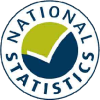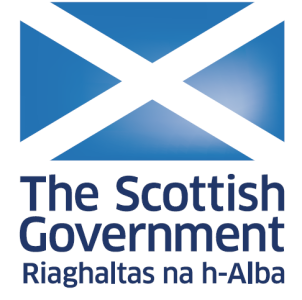Higher Education Student Statistics: UK, 2019/20 - Student numbers and characteristics
- Summary
- Student numbers and characteristics
- Where students come from and go to study
- Subjects studied
- Qualifications achieved
- Notes
How many students are in HE?
- The total number of HE students stood at 2,532,385 in 2019/20, an increase of 3% from 2018/19. Including HE students registered at FE providers throughout the UK, the total number of HE students was 2,697,380 (see figure 4).
- There was a 37,605 or 15% increase in first year masters taught course enrolments from 2018/19 to 2019/20. Increases from 2016/17 coincided with the introduction of postgraduate loans for masters' students, but from 2017/18 was mostly due to an increase in non-EU students. A breakdown of all postgraduate taught course enrolments by domicile can be seen in figure 9.
- Among first year masters taught students the numbers studying full-time increased by 35,170 from 2018/19 to 2019/20. Numbers studying part-time increased by 2,435.
- Of first year undergraduate enrolments, first degree courses account for the overall increase in number from 2018/19 to 2019/20 and was the only level of undergraduate study to see an increase this year.
- Overall, during the five year period 2015/16 to 2019/20, masters taught and first degree level course enrolments have seen year on year increases. All other postgraduate and undergraduate level courses have seen year on year decreases in enrolment numbers.
What does ‘first degree’ mean?
First degrees generally lead to a bachelors qualification such as BA or BSc (rather than a masters or doctorate degree). ‘First degree’ describes the course of study and may include students who already hold a first degree. See the level of study definitions for more detail.
Figure 3 - HE student enrolments by level of study
Academic years 2015/16 to 2019/20
Show:
This option restricts the table to only show students who were on the first year of their course. This is useful for restricting data to the newest cohort of entrants. See the year of study definitions for more detail.
- HE student enrolments at FE providers have decreased over the past five years. For postgraduate and other undergraduate courses, this decline in number started in 2016/17, whereas first degree numbers declined from 2017/18 onwards.
- Part time other undergraduate courses at both HE and FE providers saw year on year decreases in enrolment numbers over the past five years. Between 2018/19 and 2019/20 specifically, among HE providers there was a decrease of 9,915 or 10%. For FE providers the decrease was 6,320 or 9%.
Figure 4 - HE student enrolments at HE and FE providers by level of study and HE provider type
Academic years 2015/16 to 2019/20
This figure was revised on 24 March 2021 with final data, replacing previously provisional 2019/20 data for FE providers in Northern Ireland.
Further education (FE) providers are typically FE Colleges or Sixth form colleges. They mainly provide further education courses (see What qualification levels mean on gov.uk) to students aged 16 and over, that are not at the higher education (HE) level. FE providers are generally funded by a different mechanism from HE providers and their data collected by different organisations.
Many FE providers also provide some HE level courses. The FE funding and data collection bodies have provided aggregate statistics about students on HE courses so that we can give an overview of the full scale of higher education study in the UK.
What are the characteristics of HE students?
Sex of students
- Of all HE students in 2019/20, 57% were female (see figure 5). This has been the same since 2016/17.
- A larger proportion of part-time students were female than full-time students.
- Other undergraduate courses showed the widest gap in the proportion of male and female students. Postgraduate research courses showed the smallest gap.
Age of students
- In 2019/20 the proportion of first year enrolments increased for those in age groups 21-24 years and 25-29 years but decreased for those aged 30 years and over.
- Over the five year time series, the number of first year students aged 21-29 has increased year on year. Those in the 20 and under group increased in 2019/20 after a small drop from 2017/18 to 2018/19.
Student disability status
- The overall number of students with a known disability is increasing year on year both in enrolment numbers and in proportion of all students.
- From 2018/19 to 2019/20 the increase was 28,370. Students with a specific learning difficulty or a mental health condition form the largest groups within those with a known disability.
- There were 122,755 students with a specific learning difficulty such as dyslexia, dyspraxia or AD(H)D in 2019/20. This number accounts for 33% of all students with a known disability. A further 105,590 students reported a mental health condition, such as depression, schizophrenia or anxiety disorder.
Religious belief of students
- Students with no religion or religious belief account for 49% of all students.
Ethnicity of students
- The percentage of UK domiciled students that are White has decreased over the last five years. However, the percentage that are Asian, Black and from Other ethnic backgrounds has increased.
- There was greater proportional change over the five year period for students that are White who studied full time compared to those studying part time.
UK domiciled means that the UK was a student’s normal place of residence before starting their course. In this release Guernsey, Jersey and Isle of Man residents are included in ‘UK domiciled’. See the domicile definitions for more detail.
The HESA student record includes ethnicity information collected from HE providers (see ethnicity definition).
BME stands for ‘Black and minority ethnic’ and is a combination of the Black, Asian, Mixed and Other ethnicity categories.
Figure 5 - HE student enrolments by personal characteristics
Academic years 2015/16 to 2019/20
Show:
Widening participation data is only returned to HESA for students who apply through UCAS, so to align with the cohort who typically enter through this route, figure 6 has been restricted to undergraduate UK domiciled full-time students.
Index of multiple deprivation (IMD) applies to student domicile, other domicile IMD data will be hidden when a country is selected. The various indices of multiple deprivation use similar methodologies, but differ in the indicators used, the time periods included and the sizes of the areas they cover. These factors mean that IMD is not comparable between UK administrations.
Low participation neighbourhood information comes from the participation of local areas (POLAR) classification, which is maintained by the Office for Students. This data shows:
- From 2018/19 to 2019/20, the proportion of students from a state-funded school or college has remained constant at 91%.
- The proportion of students from a state-funded school or college was greater for those enrolled in other undergraduate courses compared with those in first degree courses.
- In 2019/20, among students enrolled in first degree courses, half had one or more parents that attained a higher education qualification. This compared with 35% for those enrolled in other undergraduate courses.
- The proportion of other undergraduate students from a low participation neighbourhood has increased by 2 percentage points between 2018/19 and 2019/20.
Figure 6 - UK domiciled full-time HE undergraduate student enrolments by participation characteristics
Academic years 2018/19 to 2019/20
Show:

Release date
27 January 2021, 9:30
Coverage
UK
Release frequency
Annual - view all releases (1998/99 onwards)
Themes
Children, education and skills
Issued by
HESA, 95 Promenade, Cheltenham, GL50 1HZ
Press enquiries
+44 (0) 1242 388 513 (option 6), [email protected]
Public enquiries
+44 (0) 1242 388 513 (option 2), [email protected]
Statistician
Rebecca Mantle
Pre-release access
View pre-release access list for this release





